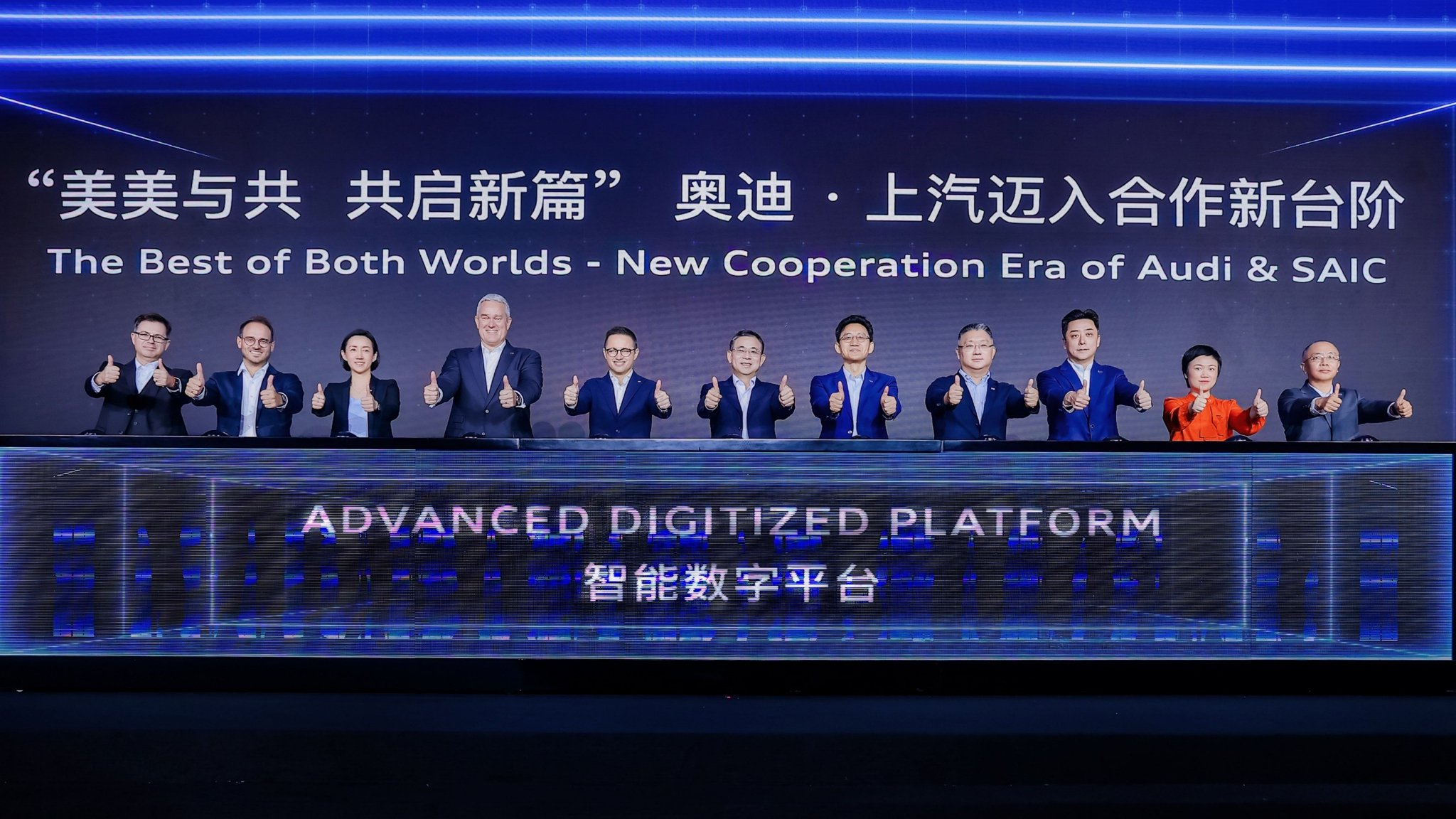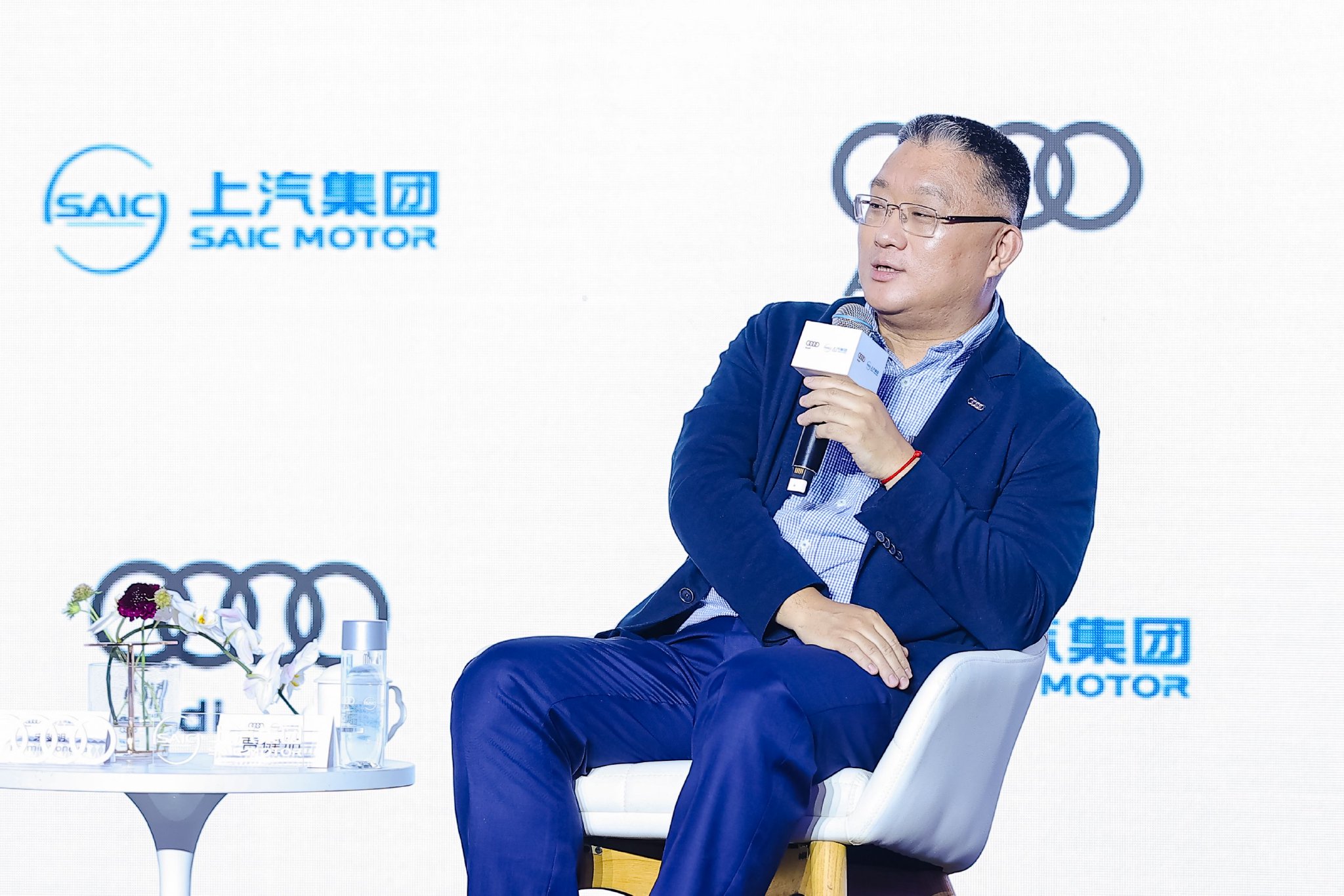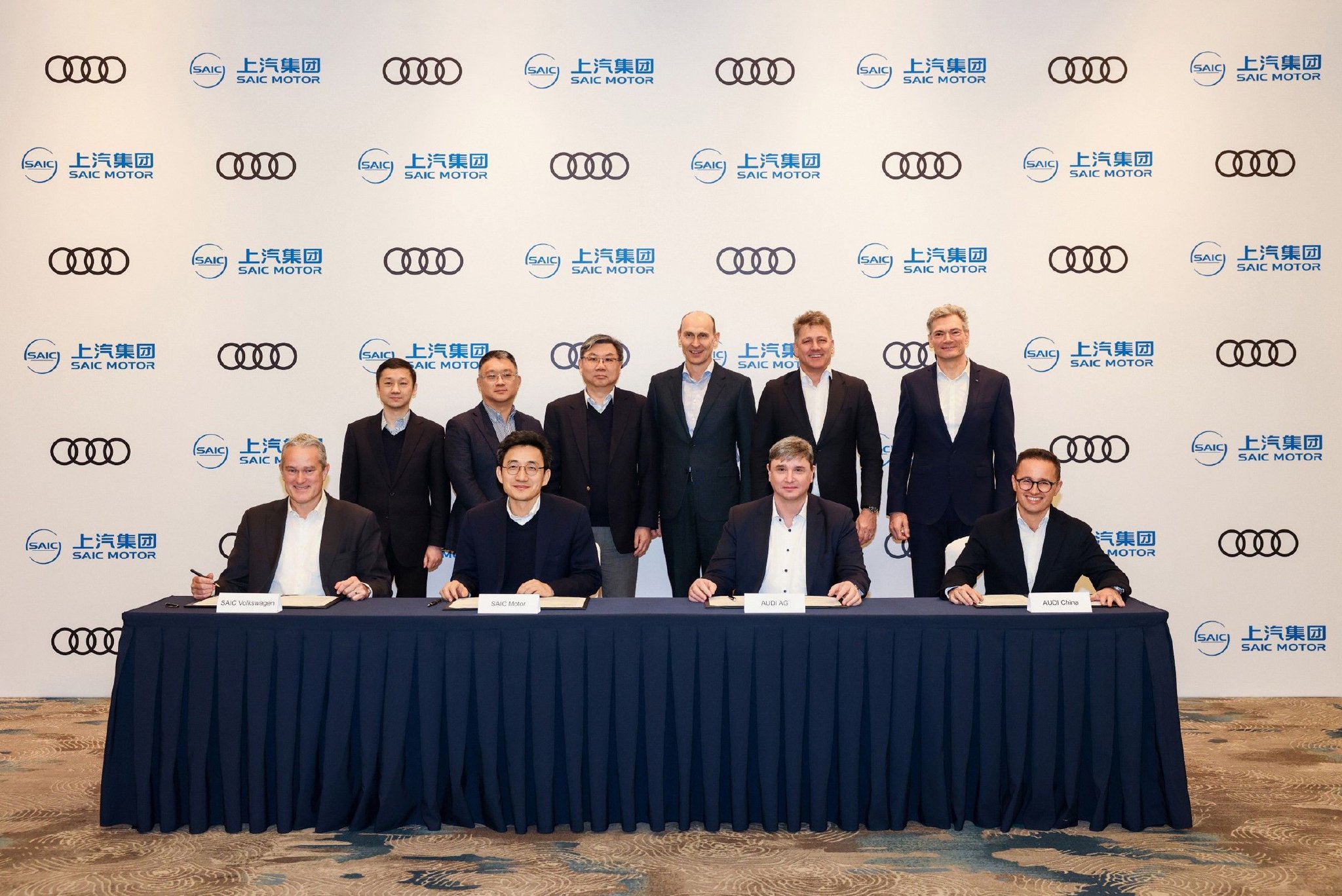On May 20, a significant event that could impact China’s new energy industry is brewing. Following the signing of a memorandum of understanding to deepen strategic cooperation in July 2023, SAIC Group, SAIC Volkswagen, and Audi have officially signed a cooperation agreement and launched the joint development of the Advanced Digitized Platform. Audi has become the first luxury brand to collaborate with Chinese car companies in developing a new electric vehicle.
At the launch ceremony at the Guoke Zhongxin Terminal on the North Bund, the sound of cruise ship horns, people’s laughter, and the sparkling waves on the river witnessed the beginning of a new era in the automotive industry. Just as the Suzhou River merges into the Huangpu River here, the old model of joint venture car companies is ending, and a new era of adventure and opportunity in China’s new energy industry is beginning. Planting a seed, sprouting new productive forces The well-known story of SAIC and Audi is that SAIC and Volkswagen Group, the parent company of Audi, officially established Shanghai Volkswagen in 1984. But little known is that the classic Audi model, the Audi 100, which was later produced by FAW Audi, was actually assembled by Shanghai Volkswagen in 1986. Although SAIC and Audi appeared together in the past two years, Volkswagen’s “enlightenment” role in the Chinese automotive industry over the past 40 years is indelible. Now, the Chinese automotive industry has shifted from introducing foreign capital and technology to independent research and development, leading the world, and then to reverse joint ventures, using technology to benefit foreign partners. While the current trend is for cars to go global, it is more accurate to say that foreign car companies need the Chinese market and crave Chinese technology. So, in response to the call of the times, SAIC and Audi, who have always had a deep bond, have come together again. There are strategic considerations behind why Audi chose China and why they chose SAIC. First, let’s look at why they chose China. Jia Jianxu, Vice President of SAIC Group and General Manager of SAIC Volkswagen, told The Paper that the importance of the Chinese market to Audi is reflected in three aspects. Audi has three considerations.
He said: “First, the best electric component companies are now in China. Second, the development of digital technologies including cockpit digitization, intelligent chassis, smart cockpit, and autonomous driving is fastest in China. Third, they believe that Chinese consumers are more demanding than consumers in other countries around the world, because global consumers see cars as a means of transportation, while Chinese consumers not only see cars as a means of transportation, but even as a concept of the third space.” Therefore, for Audi, whose electrification process is not too fast, to make the “electric car seed” germinate, it must first choose China, a land with new productive forces. Now, Audi’s pure electric vehicles are based on four electric vehicle platforms of the Volkswagen Group, including the J1 high-performance electric platform, MEB platform, MLB evo platform, and PPE platform. If Audi wants to enhance the market competitiveness of its new energy vehicles, it undoubtedly needs to develop a brand new platform focused on China according to the market demand. SAIC, as a car company with strong independent research and development capabilities for pure electric exclusive series platforms, and also a “old friend” of Audi, is the most suitable choice. Both sides not only have unified awareness and close cognition, but can also share resources in the supply chain and industrial chain. Jia Jianxu revealed that SAIC Volkswagen’s factory in Anting will start transformation on the 24th of this month, and plans to produce a new Audi model ten months later. This is the latest practice of sharing industrial chain resources. In the new energy track, “In China, for China” is a necessary condition for Audi’s success. In Jia Jianxu’s words, both Chinese and foreign partners in joint ventures must use China’s strongest assets today to explore a new path. A united front to break through R&D constraints The importance of the cooperation project between Audi and SAIC can be seen from the fact that the project CEO, Song Feiming, reports directly to Audi’s global CEO.
This project is not only important but also difficult. How to meet global standards and satisfy Chinese consumer demands. Simply put, it needs to be fast and accurate – fast development cycle, accurate demand insights. In today’s Chinese market, the R&D cycle for a new car has been compressed from 48 months to 18-24 months. So, speed is not a challenge for Audi. The collaboration will focus on the “Intelligent Digital Platform” for product implementation. It is not only smart-sounding but also different from traditional “vehicle architecture/platform” concepts. In traditional car R&D, a simple modification requires making a new model and shipping it to the other party due to geographical distances. This traditional method wastes time on transportation, shortening the R&D cycle. The “Intelligent Digital Platform” enables full digital development. R&D personnel from China and Germany can make real-time modifications and synchronized development through a combination of online and offline modes, similar to popular online documents. This mode significantly improves the efficiency of the Audi-SAIC project. Furthermore, CEO Song Feiming of the Audi-SAIC project told Pengpai News reporters: “When the Chinese team rests, German colleagues will take over based on the achievements of the Chinese team. Our work time adds up to 20 hours a day.” This is not promoting “996” overtime culture but leveraging time differences to achieve greater efficiency for Audi, SAIC, and SAIC Volkswagen’s R&D personnel. Behind the SAIC Audi’s new platform is a company called “Zero Bundle Technology,” a subsidiary of SAIC Group. It will be responsible for co-creating and jointly developing intelligent car full-stack solutions with Audi DNA. Currently, Zero Bundle Galaxy Intelligent Vehicle Full Stack Solution has planned a four-generation roadmap. In summary, all intelligent solutions will be empowered by this company, from AI large models to multi-mode man-machine interaction, from OTA to cross-domain/central integrated architecture. As long as SAIC Audi needs it, Zero Bundle Technology will output its technical data without reservation. With the support of a new research and development model and strong resources, the automobile development cycle can be shortened by more than 30%. This innovative automobile development model, undoubtedly a new productive force born out of the Audi-SAIC cooperation project, is a qualitative change that emerged after overturning traditional car-making thinking. Although China leads the world in intelligent electric vehicles, it has also entered the stage of close combat after product convergence. For Audi, how to quickly respond to the Chinese market while ensuring “Audi’s style” is also worth considering. In this regard, Song Feiming believes: “The new platform is mainly developed based on the production needs of Audi vehicles, so each product will inherit the Audi brand DNA.” In terms of hardware, it will continue Audi’s attention to detail and pursuit of using high-end materials. In terms of software, cutting-edge intelligent connected technologies will be applied in the products, and Audi’s high-end driving experience and system will also be integrated into the vehicle definition. In summary, the product strategy under the new Audi SAIC platform is to create “Audi electric vehicles based on the new productive forces of the Chinese new energy vehicle industry.” At that time, the technologies that are currently considered moats by the new forces in car manufacturing, such as high multiple fast charging and central integrated architecture, will no longer be their “patents.” When the entire industry gradually catches up in technology configuration and development efficiency, “standards” and “style” become important indicators for distinguishing the high and low levels of brands. As Song Feiming said: “No matter how fast you are, if you cannot meet Audi’s requirements, that thing definitely cannot be used.” From introduction to output, the Chinese automobile industry welcomes a new era of joint ventures. From the perspective of the enterprise, Audi’s cooperation with SAIC is for better meeting the expectations of Chinese consumers. From an industry perspective, developing new energy vehicles is a necessary step for China to transition from a major automobile country to a strong automobile country, and the collaboration between the two parties is the latest practice guided by this slogan.
In the past decade, the annual sales of new energy vehicles in China have grown from less than 100,000 to 9.495 million, an increase of over 100 times. Overseas sales have increased from 86,000 to 1.208 million, a 14-fold increase. Through various battery technology routes and power drive modes, China’s new energy vehicle industry has emerged as a global leader. Overseas car companies have transitioned from having absolute decision-making power in joint ventures to Chinese teams having the final say. The shift from “market for technology” to “technology reverse output” has led to Chinese automakers taking center stage at major European and American auto shows. With Chinese brands at the core, the “new joint venture era” has arrived. The theme of the May 20 press conference, “Beauty in Sharing, Sharing a New Chapter,” signifies the evolution of joint venture relationships from “each showing their own beauty, appreciating each other’s beauty, sharing beauty together, and achieving harmony in the world.” For Audi, China is not just a market, and Audi is more than just an investor in China. Both sides are deepening their cooperation with cutting-edge technologies, marking a new brand value for the century-old luxury brand in the era of electric vehicles. This also represents China taking the first step towards empowering the world with automotive technology.



